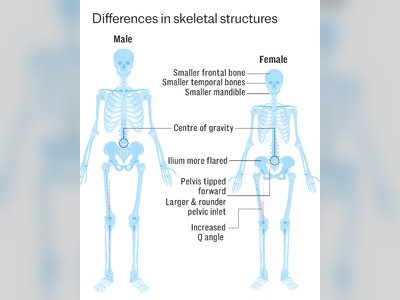Unveiling the Electromagnetic Characteristics of the Great Pyramid of Giza
Studies indicate that the ancient structure can concentrate electromagnetic energy.
Recent research has revealed that the Great Pyramid of Giza is capable of focusing electromagnetic energy within its internal chambers and beneath its foundation.
An international team of researchers utilized theoretical physics methods to examine the pyramid's interaction with electromagnetic waves, especially in the radio frequency spectrum.
Their research indicates that, under certain resonance conditions, the pyramid can concentrate electromagnetic energy in specific locations, such as the King's Chamber, the Queen's Chamber, and the unfinished chamber located beneath the pyramid.
These conclusions were reached through numerical modeling and analytical methods.
The researchers initially estimated that resonances within the pyramid could be triggered by radio waves with wavelengths between 200 and 600 meters.
They then modeled the pyramid's electromagnetic response and calculated the extinction cross section to evaluate how much of the incoming wave energy could be either scattered or absorbed under resonant conditions.
Ultimately, they mapped the distribution of the electromagnetic field within the pyramid under these specific conditions.
The study's authors propose that these findings could guide the development of nanoparticles that replicate similar effects in the optical spectrum, potentially leading to innovations in nanosensors and highly efficient solar panels.
Additionally, engineer Christopher Dunn has suggested that the Great Pyramid served as a large acoustical device, harmonically linked to the Earth.
In his book, 'The Giza Power Plant: Technologies of Ancient Egypt,' Dunn theorizes that the pyramid was engineered to transform the Earth's vibrational energies into microwave radiation.
He argues that the pyramid’s various chambers and passageways were intentionally arranged to enhance its acoustical characteristics.
While these theories provide fascinating insights into the pyramid's function, they continue to be debated within the scientific community.
An international team of researchers utilized theoretical physics methods to examine the pyramid's interaction with electromagnetic waves, especially in the radio frequency spectrum.
Their research indicates that, under certain resonance conditions, the pyramid can concentrate electromagnetic energy in specific locations, such as the King's Chamber, the Queen's Chamber, and the unfinished chamber located beneath the pyramid.
These conclusions were reached through numerical modeling and analytical methods.
The researchers initially estimated that resonances within the pyramid could be triggered by radio waves with wavelengths between 200 and 600 meters.
They then modeled the pyramid's electromagnetic response and calculated the extinction cross section to evaluate how much of the incoming wave energy could be either scattered or absorbed under resonant conditions.
Ultimately, they mapped the distribution of the electromagnetic field within the pyramid under these specific conditions.
The study's authors propose that these findings could guide the development of nanoparticles that replicate similar effects in the optical spectrum, potentially leading to innovations in nanosensors and highly efficient solar panels.
Additionally, engineer Christopher Dunn has suggested that the Great Pyramid served as a large acoustical device, harmonically linked to the Earth.
In his book, 'The Giza Power Plant: Technologies of Ancient Egypt,' Dunn theorizes that the pyramid was engineered to transform the Earth's vibrational energies into microwave radiation.
He argues that the pyramid’s various chambers and passageways were intentionally arranged to enhance its acoustical characteristics.
While these theories provide fascinating insights into the pyramid's function, they continue to be debated within the scientific community.












